With birds already getting some credit for aircraft winglets, now Airbus is looking at another well-known trick of theirs: wake energy retrieval. And it may be closer to becoming reality than you might think!
Geese and aircraft are not always on friendly terms. The miracle on the Hudson started when an Airbus A320 and a flock of Canadian geese inadvertently crossing paths. It ended OK for the plane’s passengers and crew; less so for many of the geese. However, even in the 21st century there’s a trick that geese are using every day, that planes have yet to master. It’s called ‘wake energy retrieval’.
If wake energy retrieval means nothing to you, it’s simply the ‘V’ formations that geese make as they fly. In a recent video, Mentour Pilot talked about wing tip vortices and the role winglets play in them (see end of article). One take away from the video is that all wings create these vortices – including birds’ wings. The vortices culminate in a horizontal swirl of air, emanating from each wingtip.
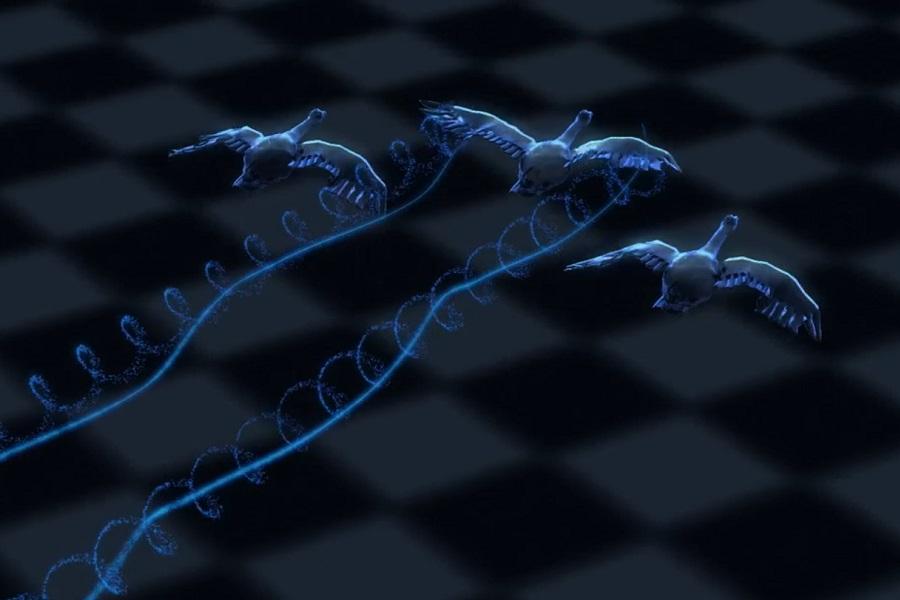
This swirl has an outer upward component and an inner downward one. Wake energy retrieval simply means that birds position themselves in such a way that their wings stay in the upward-moving air, coming from the bird in front and slightly to the side of them. This way, the birds following are effectively moving in an updraft. Constantly.
Wake Energy Retrieval Explained
By positioning themselves in this updraft, birds can fly horizontally but effectively be in a slight descent. This saves them some effort. This wake energy retrieval of course doesn’t apply to the leading bird, that has to try harder. Birds cycle the lead role between them, to keep everyone happy, or give that role to the strongest birds…
By now you may be reading this and wondering how on earth it could apply to aircraft. Well first of all, don’t worry. Airbus has not been placing aircraft that close. But they HAVE tested wake energy retrieval already. Conducted at various distances, Airbus’ tests proved that the effect is strong enough at distances where passenger comfort isn’t an issue.
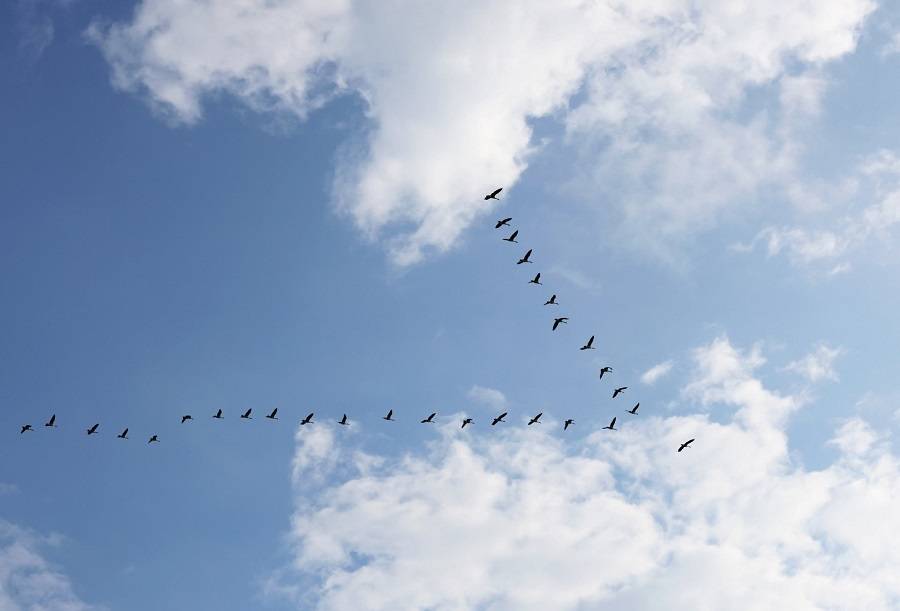
These first wake energy retrieval test flights took place in 2016. Earlier this year, Airbus repeated them, this time actually crossing the Atlantic. The tests involved pairs of A350 aircraft, at first. Then an A380 joined the fray, as the leading jet. And they didn’t just prove that this could be done with no comfort problems. They also proved that the following jet stood to gain between 5 and 10% in fuel economy. That’s considerably more than any gains from winglets, for example.
Airbus decided on a distance of about 3km (1.5nm) as optimal. And the next step is to get airlines to do it with ATC support, over the Atlantic. 3km sounds like a good distance to many of us. But it’s about 1/20th the distance two planes in the same altitude would be in, during an ocean crossing. So for such a project to work in practice, ATC participation and regulatory support, are essential.
Fello’Fly – How The Process Works
To make wake energy retrieval a practical reality, ATC and the airlines will use a lot of existing technology and procedures. But some new procedures and systems will come into play as well. First, aircraft will use existing waypoints to enter oceanic airspace. And ATC will now guide them to enter at closer distances, but they will still do so at different altitudes. Initial separation will be 1,000 feet.
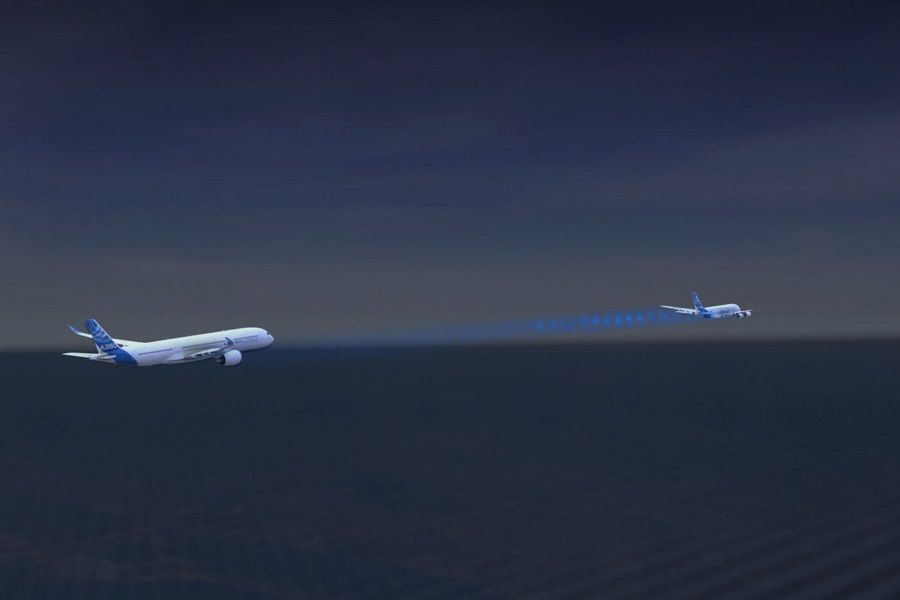
In busy airspaces, pilots already use tools that enable them to arrive at a waypoint within a specific allocated time. This is what they will use for their “fello’fly” rendezvous. For safety reasons, they will still do so with greater horizontal separation than the target 1.5nm distance. They will then close to this distance, still 1,000 feet apart vertically, before they begin their wake energy retrieval pairing.
At the right distance, ATC will pass the responsibility for separation to the aircraft themselves. They will effectively become a formation, with the front aircraft being the lead, that talks with ATC. Next, the aircraft will need some new software in their systems, to position themselves correctly. The second aircraft will first move laterally, in what Airbus calls the Pre-OPTI (for ‘optimum’) position.
At this point the second jet is still 1,000 feet below the lead. Once it moves far enough laterally, it then begins to climb to the same flight level. There, it moves back towards the rear of the front jet, until it is at the OPTI position, 1.5nm (3km) behind. At this point the second jet makes optimum wake energy retrieval. These Pre-OPTI and OPTI functions will be part of the flight management systems of the aircraft.
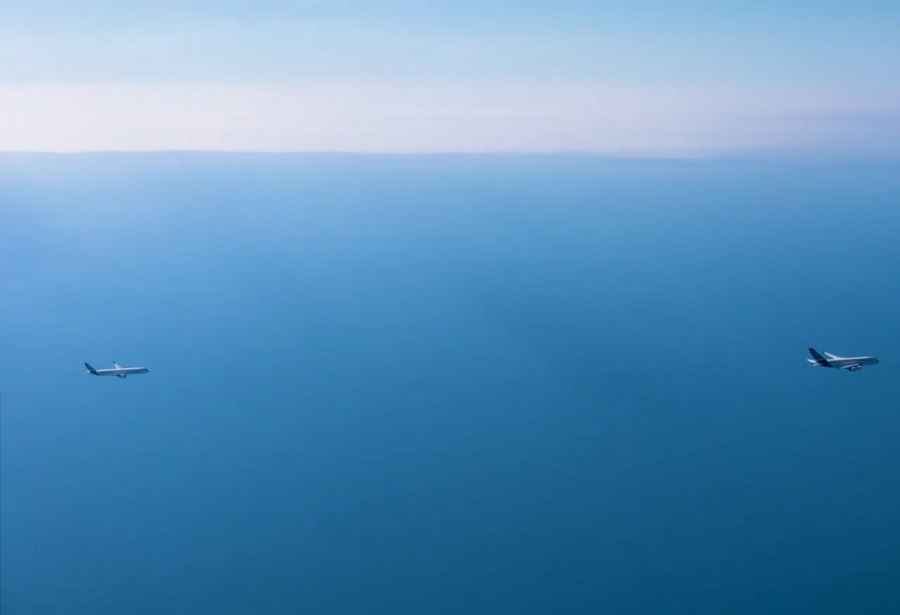
Possible Issues
Eventually the two aircraft will have to part ways. At this point they will once again move to different flight levels, before ATC starts to handle them separately. And it is there, AND the rendezvous point, where some problems can occur. For wake energy retrieval to be beneficial, the aircraft shouldn’t have to waste energy to get together or separate.
In other words, airlines will need to avoid having one aircraft loitering or moving at sub-optimal speeds, to join the other aircraft. This probably means that it would be difficult to benefit from wake energy retrieval if both aircraft depart from the same airport. And obviously any delay for one of the two jets, would make the pairing impossible.
Beyond that, another possible issue is the different aircraft types that will be able to pair up. According to Airbus, the types it has tested so far are the A350 and the A380, the latter as the lead only. They will need to ensure that the 1.5nm distance is safe and optimal for all possible combinations of jets. Also, the cruise speeds of both types need to agree. The gains from wake energy retrieval will likely be less than its the lost efficiency of either jet moving at sub-optimal speed.
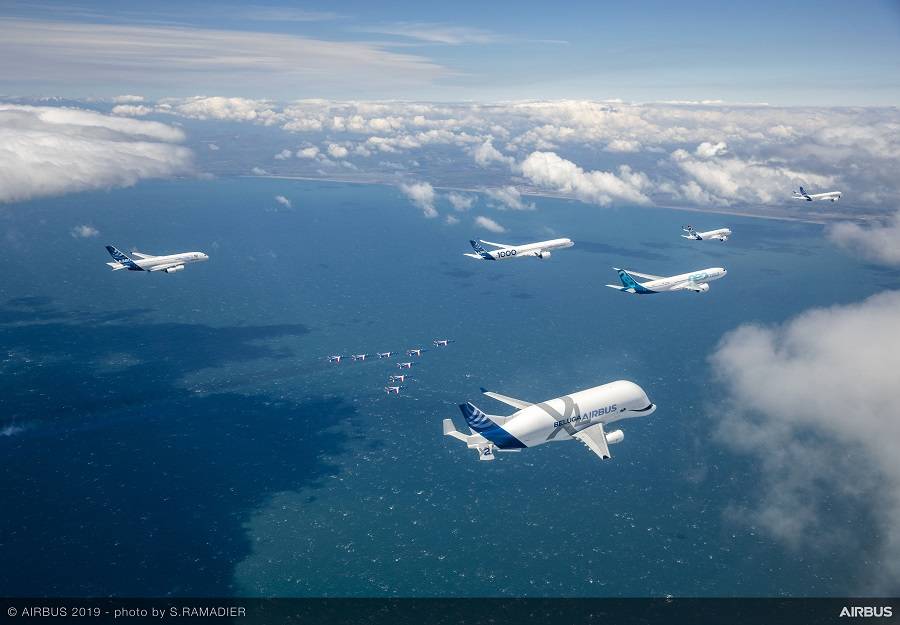
Applicability Of Wake Energy Retrieval
Finally, it will be interesting to see what kind of inter-aircraft communication this technology will require. If the second jet’s computers can do the work alone, it could work even with a Boeing as a lead. That would multiply the chances to get the system to work. But again, only if that particular Boeing has a compatible cruise speed with that particular Airbus…
If these problems can be dealt with, wake energy retrieval could be a winner for Airbus. The idea needs no real redesign in aircraft, as it simply ‘harvests’ energy that would otherwise be lost. Software advances like TCAS and more recently ADS-B should give aircraft adequate sensors and redundancy to make this happen.

Airbus has already ‘recruited’ the help of different airlines. That should help, since the chances of coordinating two flights from a single airport are tricky. Coordinating them from different airports has its own challenges, but would give Eurocontrol and the airlines more options.
Finally, the project is a good example of how seemingly small details can create big gains. A 10% reduction in fuel burn is no small feat. If wake energy retrieval does what it promises, its gains amount to 2/3 the gains Boeing made, going from the 737NG to the 737MAX, for instance.
Airbus has shown us other innovative projects that they have in mind. But here, they show how we can improve efficiency with what we already have, if we use it cleverly. Let’s hope birds have more such tricks to teach us!



